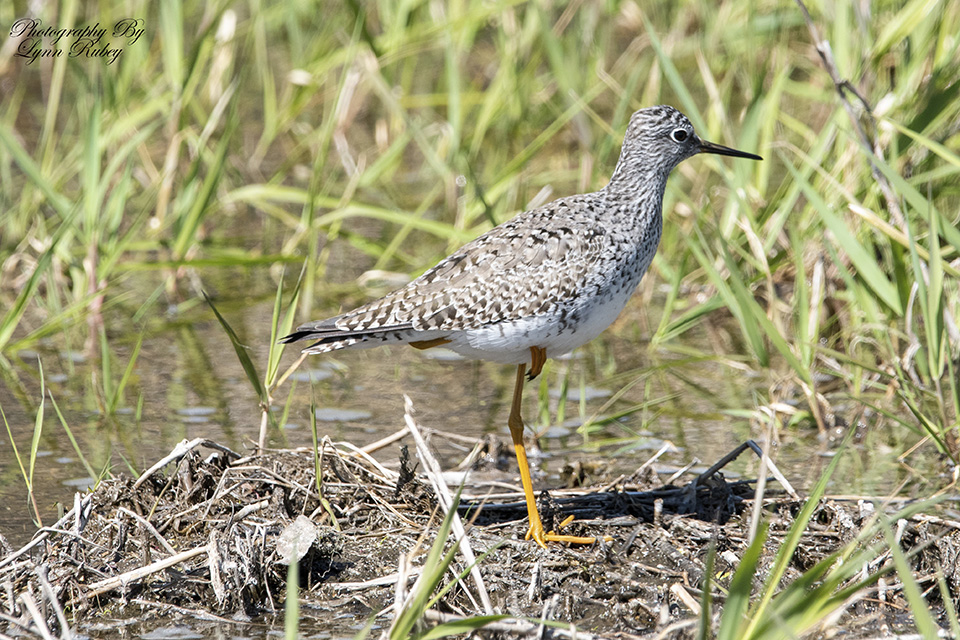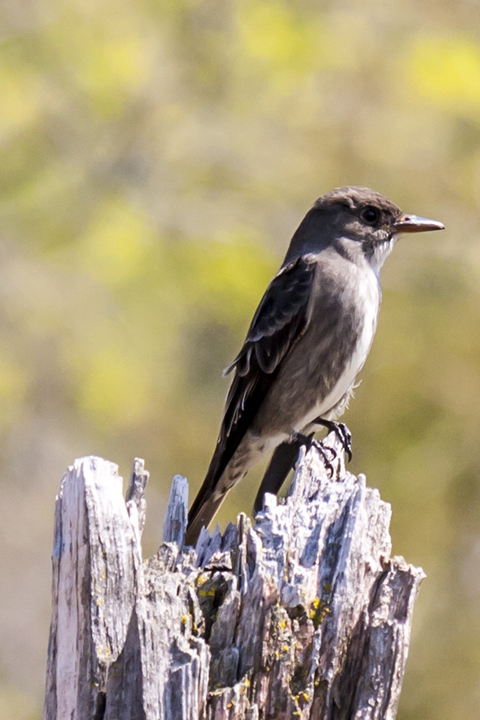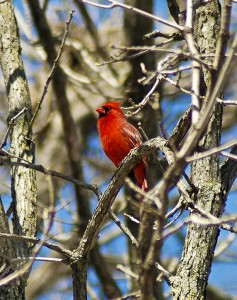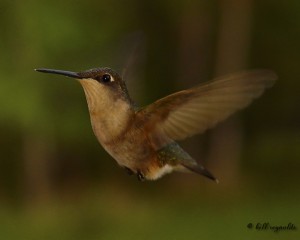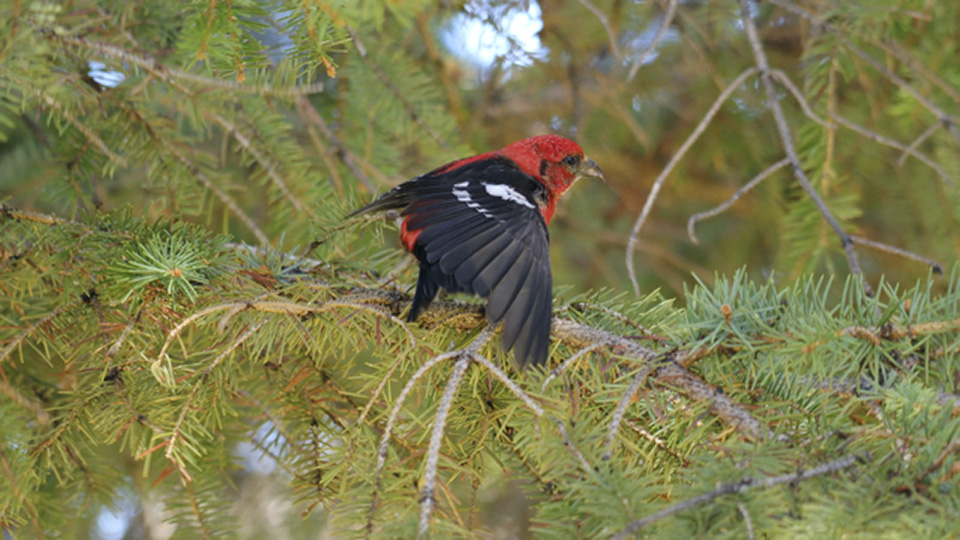
White-winged Crossbill (Loxia leucoptera) is a colorful, medium-sized finch. It occurs in the temperate and subpolar regions of the Northern Hemisphere. In Minnesota it is common to uncommon in the northeastern coniferous and mixed forests, occasional to rare in the remainder of the state. Migration is irruptive, with large numbers visiting the state one year and none the following year.
White-winged Crossbill is found mostly in coniferous forests with spruce, tamarack, and eastern hemlock, sometimes in deciduous forests, and sometimes in towns. Adults feed mostly on spruce and tamarack seeds, but also on the seeds of other coniferous trees and deciduous trees, and occasionally on insects.
White-winged Crossbill breeding male is pinkish-red with black wings and tail. There are two bold white wing bars on each wing. This is the feature that gives the species its common name. The tips of the bill are crossed over, an adaptation that helps when extracting seeds from a spruce seed cone. Females are greenish-yellow streaked with brown.
http://www.minnesotaseasons.com/Birds/White-winged_Crossbill.html


